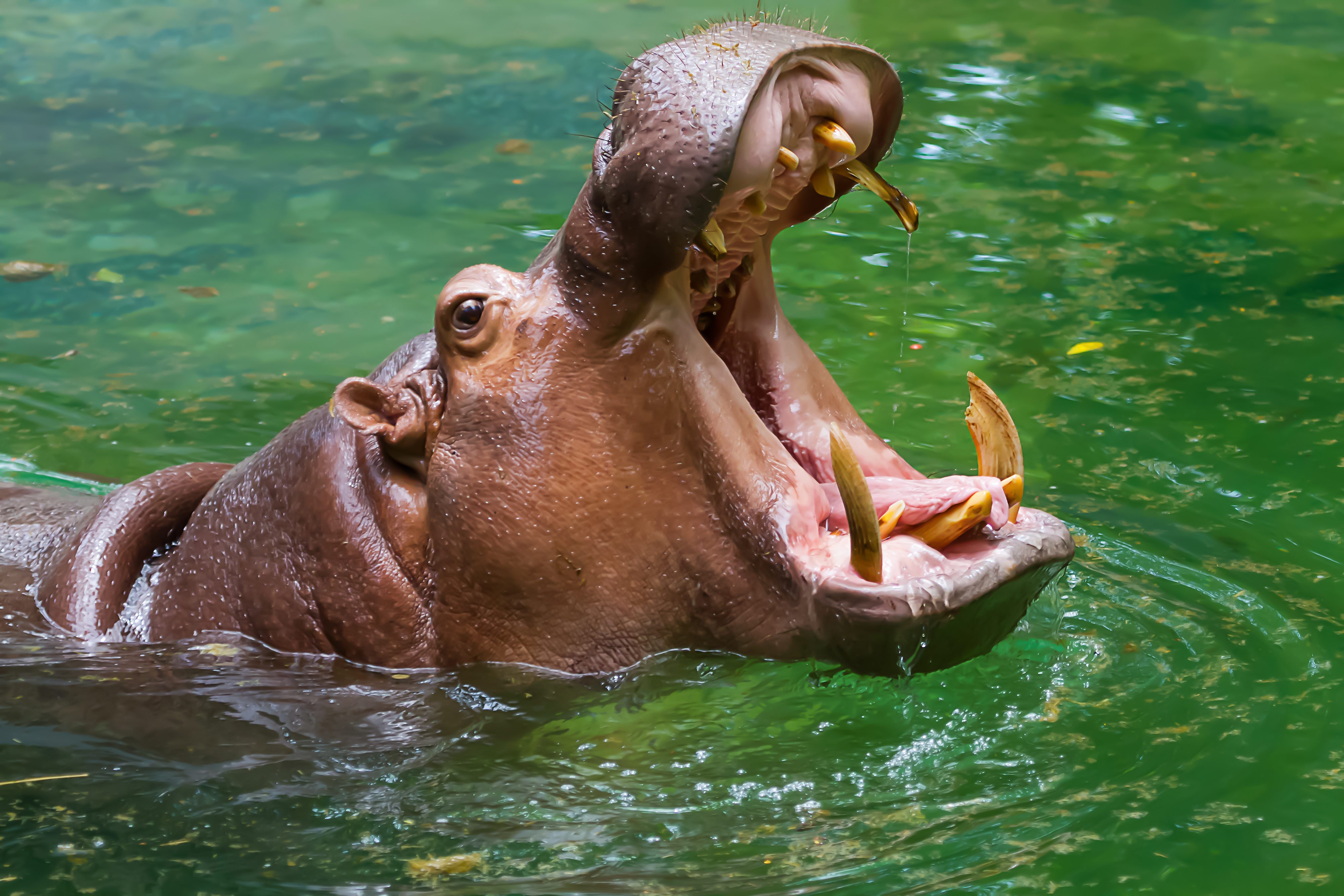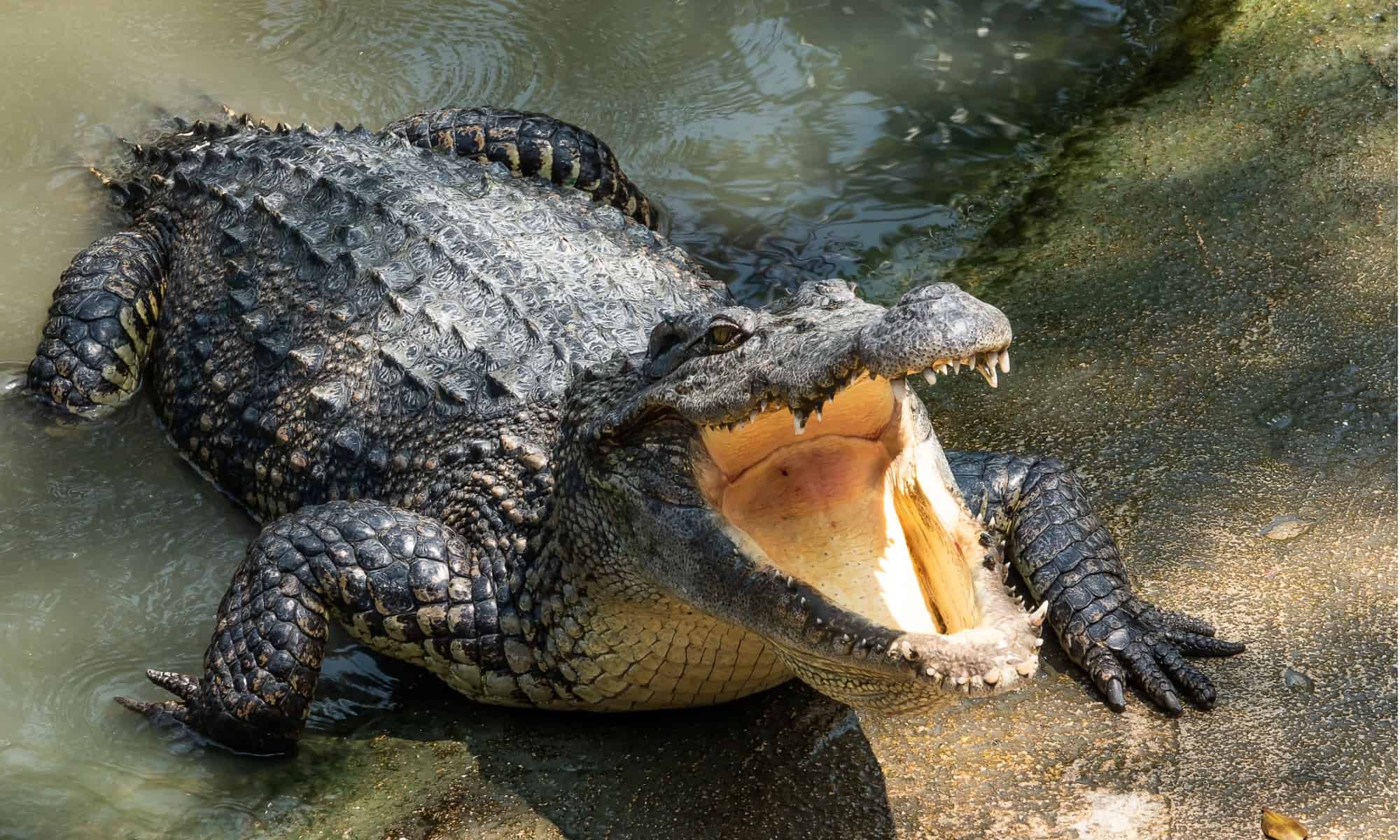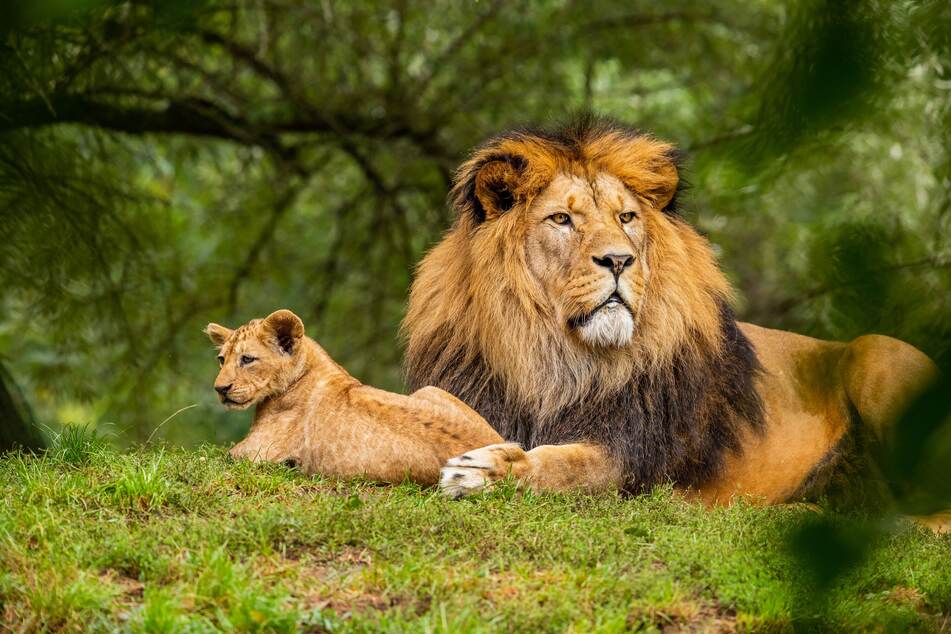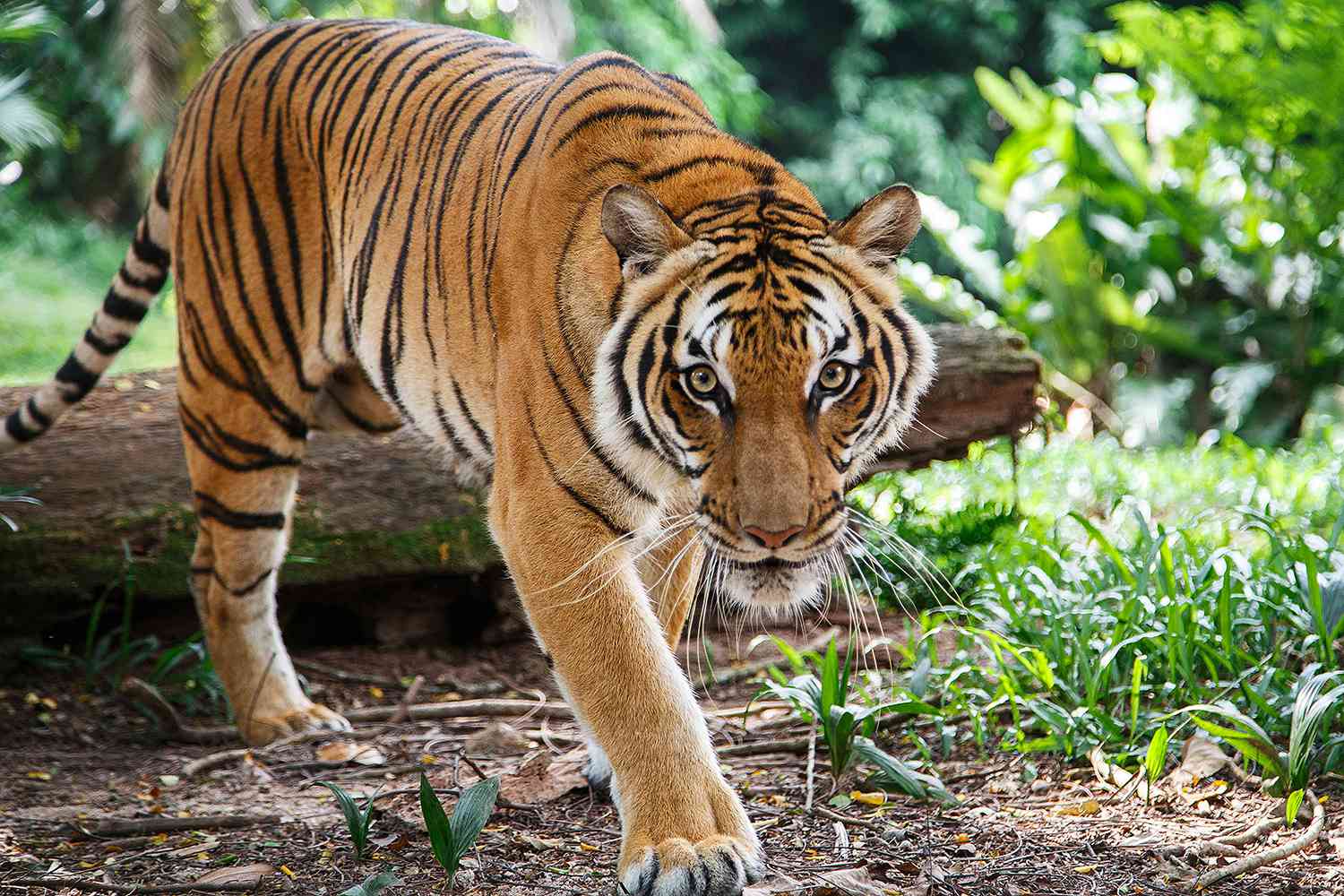Go and watch the dangerous animals in the world

Theses are the most Dangerous animals in the world;
Hippopotamus,
The hippopotamus, often referred to as a hippo, is a large semi-aquatic mammal native to sub-Saharan Africa. Here are some key facts about hippos:

-
Appearance: Hippos are among the largest land mammals, with males typically weighing between 1,500 and 3,200 kilograms (3,300 to 7,000 pounds) and measuring around 3.3 to 5 meters (10.8 to 16.5 feet) in length. They have barrel-shaped bodies, short legs, a large head, and a broad mouth revealing impressive tusks.
-
Habitat: Hippos are primarily found in rivers, lakes, and swamps throughout sub-Saharan Africa. They require water to keep their massive bodies cool and moist, which is why they spend a significant amount of time submerged.
-
Semi-Aquatic Lifestyle: Despite their enormous size, hippos are well adapted to an aquatic lifestyle. They have webbed toes and can move easily through water with their buoyant bodies. They are capable of staying underwater for several minutes at a time, using their nostrils and ears located on the top of their heads to breathe while submerged.
-
Herbivorous Diet: Hippos are herbivores, mainly feeding on grass and aquatic plants. They are grazers and consume large amounts of vegetation during the night when they venture out of the water to forage. Their massive jaws and sharp incisor and canine teeth help them tear through tough vegetation.
-
Social Structure: Hippos are social animals and typically live in groups called pods or bloats, which can range from a few individuals to as many as 40 members. These groups are led by a dominant male, known as a bull, who establishes and defends a territory.
-
Territorial Behavior: Male hippos are known for their territorial behavior, marking their territory by spreading their dung and urine with their tails while rotating it. They also use vocalizations, such as grunts and bellows, to communicate with other members of the group.
-
Aggressive Nature: Hippos are often considered one of the most dangerous animals in Africa. Despite their seemingly docile appearance, they can be extremely territorial and aggressive, especially when they feel threatened or when their young are at risk. They are responsible for more human deaths in Africa each year than any other large animal.
-
Conservation Status: The common hippopotamus (Hippopotamus amphibius) is classified as "Vulnerable" by the International Union for Conservation of Nature (IUCN). Their population is decreasing due to habitat loss, poaching, and conflicts with humans.
Hippos are fascinating creatures with their unique adaptations and social behaviors. However, it's important to remember that they are wild animals and should be observed from a safe distance to ensure both human and hippo safety.
Crocodiles,
Crocodiles are large, aquatic reptiles that belong to the family Crocodylidae. They are known for their elongated snouts, powerful jaws, and armored bodies. Here are some key points about crocodiles:

-
Species and Distribution: There are several species of crocodiles, including the saltwater crocodile, Nile crocodile, American crocodile, and more. They are found in tropical and subtropical regions around the world, primarily in Africa, Asia, the Americas, and Australia.
-
Physical Features: Crocodiles have a streamlined body shape that allows them to move swiftly through the water. They have tough, scaly skin and can vary in color from olive-brown to grayish-green. Their eyes, ears, and nostrils are located on the top of their head, enabling them to remain nearly submerged while observing their surroundings.
-
Size: Crocodile species exhibit significant variation in size. The saltwater crocodile is the largest living reptile and can reach lengths of over 6 meters (20 feet) and weigh up to 1,000 kilograms (2,200 pounds). Other species like the Nile crocodile and American crocodile are smaller but can still grow to lengths of around 5 meters (16 feet).
-
Adaptations: Crocodiles have several adaptations that make them formidable predators. Their jaws are extremely powerful, and they have sharp teeth designed for gripping and tearing. They can snap their jaws shut with great force, making them deadly hunters. Their eyes and nostrils have a protective covering that allows them to see and breathe while mostly submerged.
-
Behavior: Crocodiles are primarily aquatic and are often found in rivers, lakes, and swamps. They are opportunistic predators, feeding on a variety of prey such as fish, birds, mammals, and even other reptiles. Crocodiles are known for their ability to ambush their prey by lurking near the water's edge and then swiftly launching an attack.
-
Reproduction: Crocodiles are known for their complex courtship and mating rituals. Females build nests made of vegetation near the water, where they lay their eggs. The temperature at which the eggs are incubated determines the sex of the hatchlings. The mother is highly protective of her nest and will guard it until the eggs hatch.
-
Conservation Status: Many species of crocodiles are considered threatened or endangered due to habitat loss, illegal hunting for their skin and meat, and other human activities. Conservation efforts, such as habitat protection, captive breeding programs, and regulated hunting, are crucial for the survival of these magnificent reptiles.
It's important to note that while crocodiles are fascinating creatures, they can be dangerous and should be treated with caution and respect when encountered in the wild.
Lion,
The lion (Panthera leo) is a large, carnivorous mammal belonging to the Felidae family. It is known for its majestic appearance, strength, and iconic presence in the animal kingdom. Lions are native to Africa and a small population exists in the Gir Forest of India.
Here are some key facts about lions:

-
Appearance: Lions are easily recognized by their distinctive features. The male lion, often referred to as the "king of the jungle," is larger than the female and sports a magnificent mane around its head. The mane varies in color and length among individuals and is a symbol of power and dominance. Female lions lack the prominent mane, and their bodies are sleeker and more streamlined.
-
Social Structure: Lions are highly social animals and live in groups known as prides. A typical pride consists of several adult females, their offspring, and a few adult males. The lionesses in a pride are usually closely related, often being sisters or mothers and daughters. The males, on the other hand, join prides temporarily and may take over a pride from another male by defeating or killing him.
-
Habitat: Lions primarily inhabit grasslands, savannas, and open woodlands, but their habitat can vary across different regions of Africa. They require an ample supply of prey and access to water sources. Historically, lions could be found across much of Africa, but due to habitat loss and human activity, their range has significantly diminished.
-
Diet: Lions are apex predators and primarily feed on large herbivores such as zebras, wildebeest, buffalo, and various species of antelope. Lionesses are the primary hunters within the pride, working together in coordinated efforts to bring down prey. Male lions often claim a share of the kill but rarely participate in the actual hunting process.
-
Behavior and Communication: Lions are known for their distinctive roars, which can be heard over long distances and serve as a form of communication. They use various vocalizations, including growls, hisses, and snarls, to communicate with one another. Social interactions within prides play a crucial role in maintaining their hierarchical structure and cooperation during hunting and territorial defense.
-
Conservation Status: Lions are listed as a vulnerable species by the International Union for Conservation of Nature (IUCN). The lion population has faced significant declines over the years due to habitat loss, poaching, and conflicts with humans. Conservation efforts, including protected areas and anti-poaching measures, are crucial for the survival of this iconic species.
Lions have captivated human imagination for centuries, featuring prominently in art, literature, and cultural symbolism. They represent strength, courage, and royalty, often being associated with leadership and bravery.
Tiger,
Tigers are magnificent big cats and one of the most recognizable and iconic animals in the world. Here's some information about them:

-
Species and Subspecies: Tigers belong to the Panthera genus and are part of the Felidae family. There are currently six recognized tiger subspecies: Bengal tiger, Indochinese tiger, Malayan tiger, Siberian tiger, South China tiger, and Sumatran tiger.
-
Appearance: Tigers are known for their distinctive orange coat with black stripes, which helps them camouflage in their natural habitats. The patterns of their stripes are unique to each individual, just like human fingerprints. They have a muscular build and a large head with powerful jaws.
-
Size and Weight: Tigers are the largest cats in the world. The Siberian tiger is the largest subspecies, with males weighing up to 660 pounds (300 kilograms) and measuring around 10 feet (3 meters) in length. The smallest subspecies is the Sumatran tiger, with males weighing around 310 pounds (140 kilograms) and measuring about 8 feet (2.4 meters) in length.
-
Distribution and Habitat: Tigers are native to various parts of Asia. Historically, they were found across much of the continent, but their range has significantly decreased due to habitat loss and poaching. Currently, tigers are found in isolated pockets in countries such as India, Bangladesh, Nepal, Bhutan, Myanmar, Thailand, Malaysia, Russia, and China.
-
Behavior: Tigers are solitary animals and are known for their solitary hunting style. They are powerful predators and primarily feed on large ungulates such as deer, boar, and buffalo. Tigers are also excellent swimmers and often take to water to cool off or to hunt.
-
Conservation Status: Tigers are listed as endangered by the International Union for Conservation of Nature (IUCN). The major threats to tigers include habitat loss due to deforestation, illegal wildlife trade (poaching for their body parts), and human-wildlife conflict. Conservation efforts are underway to protect and restore tiger populations, including establishing protected areas and strengthening anti-poaching measures.
-
Cultural Significance: Tigers hold significant cultural and symbolic value in many Asian cultures. They are often considered national animals and represent strength, power, and beauty. Tigers have been depicted in folklore, mythology, and art throughout history.
It's important to note that my information is based on the knowledge available up until September 2021, and there may have been further developments or changes in tiger conservation efforts since then.








